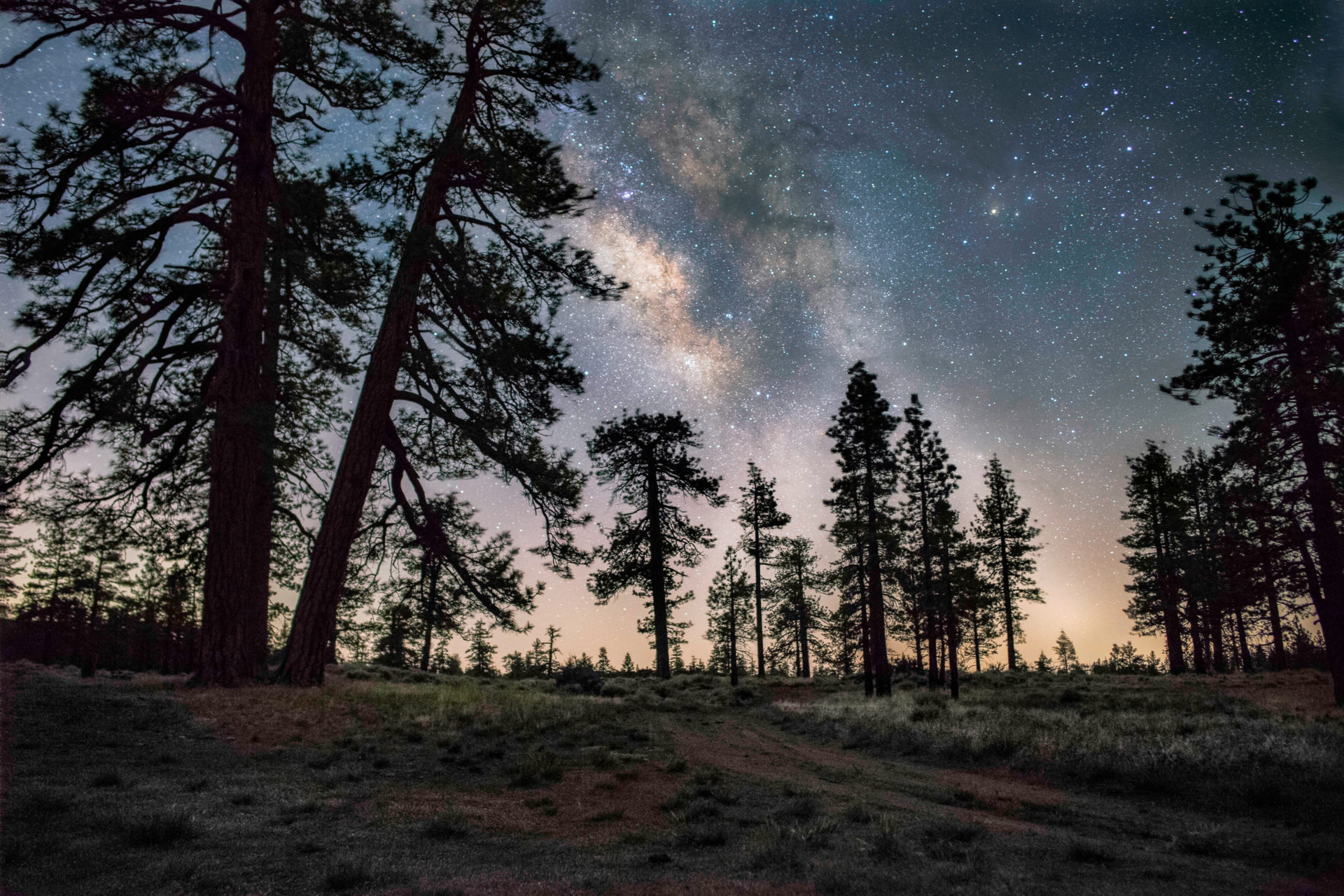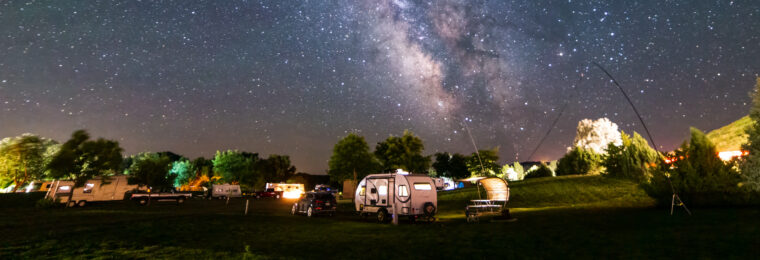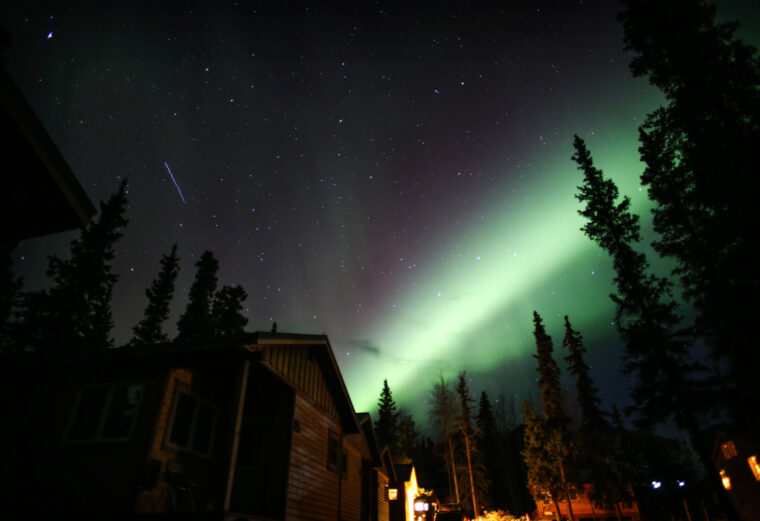One of the draws of camping is to spend a night under the stars, but have you ever planned a trip with stargazing at the forefront? Stargazing can spark the imagination, open our eyes to our place in the universe, and be a fun activity for campers of any age.
Here’s everything you need to know about planning a stargazing camping trip.
Stargazing in the U.S. and Canada
Travelers in the Northern Hemisphere, including the U.S. and Canada, have the opportunity to see visible constellations and a variety of celestial events throughout the year. Constellations, which are groupings of stars pieced together as recognizable patterns by ancient astronomers, are sought-after “sky-marks” for amateur stargazers.
Five constellations—Cassiopeia, Cepheus, Draco, Ursa Major, and Ursa Minor—can be seen year-round in the Northern Hemisphere. And, the other well-known constellations are visible at different times of the year. Purchase a star finder that matches your latitude or download a stargazing app to use as a guide for the cosmos above.
If you’re planning a trip specifically with stargazing in mind, align your itinerary with a waxing or new moon so that the sky has the least amount of illumination. Stargazing is also best in late fall, winter, and early spring, when nights are the longest. Basking in the beauty of the galaxy is possible in the summer, too—you’ll just need to stay up a little later or get up a little earlier.

Picking a Stargazing Destination for Camping
When researching spots for your next stargazing trip, start with International Dark Sky Places. These destinations, which are usually a bit off the beaten path, are known for their exceptionally clear skies and low light pollution. They’re far from bright city lights and provide unparalleled opportunities to see the cosmos in all its glory. Many Dark Sky Places—and in particular Dark Sky Parks—offer astronomy programs and resources to campers and visitors.
The Best Campgrounds to Experience a Dark Sky Park
You don’t have to camp at designated Dark Sky Places to see a gorgeous night sky—anywhere with low light pollution and an open view of the sky will do. Campgrounds with few trees (or a field or shoreline) are best so that you have the opportunity to look from horizon to horizon. When picking your campsite, choose a spot that’s located away from bright lights, such as bathroom floodlights or streetlights.
Some campgrounds, such as the Likely Place Golf & RV Resort in Likely, California, cater specifically to sky seekers with amenities like 110-volt supplied concrete stargazing pads for motorized and computer-controlled telescopes.
2023 Celestial Events in the U.S. and Canada
Want to expand your stargazing beyond constellations? Plan a trip around one of these spectacular celestial events this year—and start planning for next year’s big solar eclipse.
Perseids Meteor Shower
If you’ve heard of only one meteor shower, it’s probably the Perseid. This spectacular show of streaking meteors, which will occur between July 17 to August 24, peaking on August 12 into the morning of August 13. It often delivers 150 to 200 shooting stars per hour. The best viewing occurs after midnight.
You can see the Perseid meteor shower from anywhere in the Northern Hemisphere. Optimal camping destinations for dark sky-viewing include the Central Idaho Dark Sky Reserve in Stanley, Idaho, and Grand Canyon National Park in Arizona.
The Best National Parks for Stargazing, and Where to Camp
Annular Solar Eclipse
On October 14, there will be an eclipse where the moon is too far away to completely cover the sun, resulting in a glowing ring around the moon. The eclipse will be seen off the coast of Southern Canada and the Southwestern U.S. before moving south. Those in North America will likely be able to see a partial eclipse. Look to camp in areas like the Arizona, New Mexico, or Utah desert, as well as British Columbia.
Geminids Meteor Shower
This meteor shower is known as “the king of the meteor showers,” which runs annually from December 7 to 17. The best time to view this year’s shower will be on December 14 after midnight. Since it will be cold in most locales, check out Death Valley National Park or Anastasia State Park in St. Augustine, Florida, for warm-weather viewing.
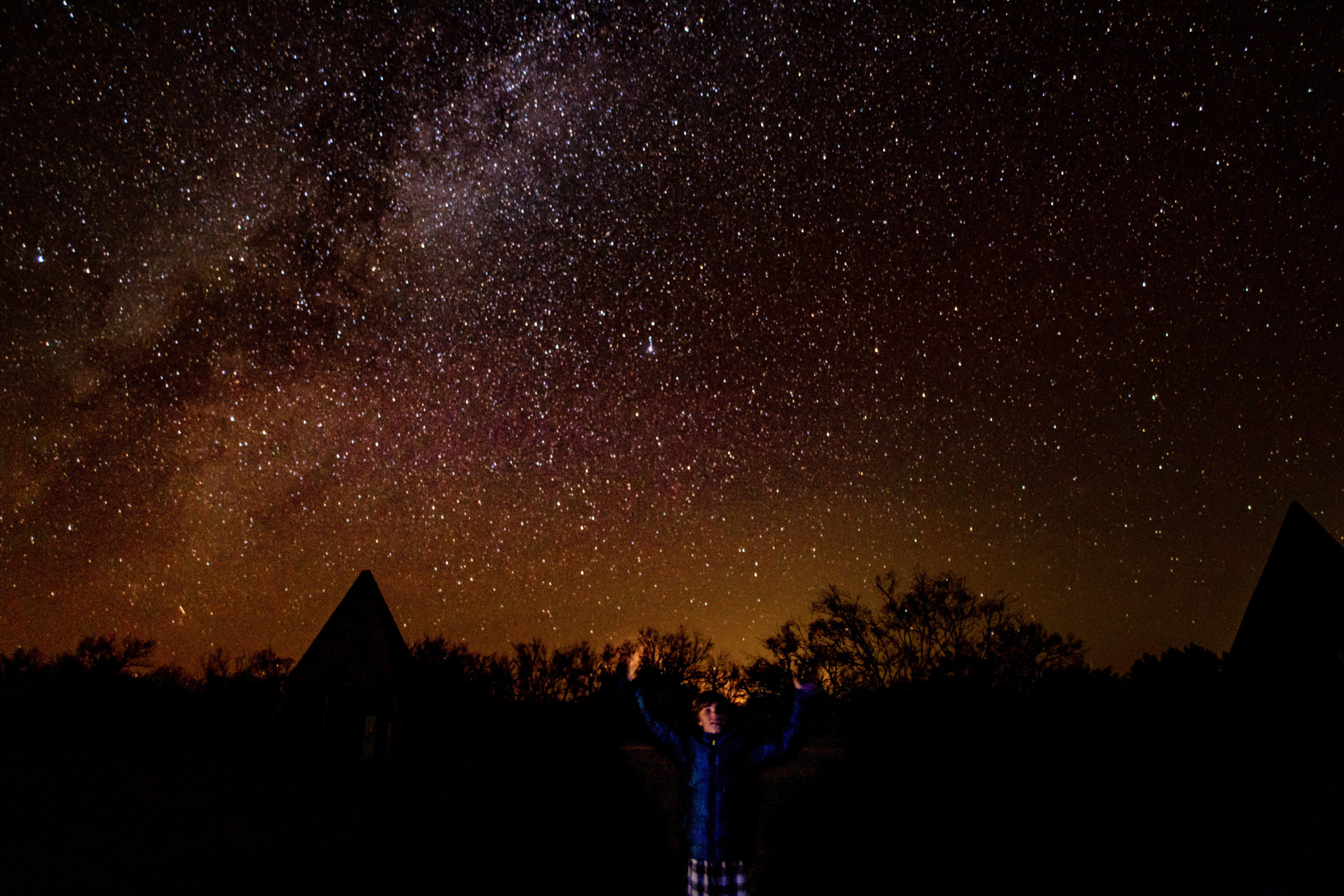
What to Bring on Your Stargazing Camping Trip
Packing for your stargazing camping trip doesn’t need to be complicated, but there are a few items that you’ll want to have to make the most of your night sky experience.
Astronomy app or star finder: An astronomy app or star finder will help you locate and identify constellations, planets, and the Milky Way.
Telescope or binoculars: A telescope or binoculars aren’t necessary for stargazing, but as you get drawn into the cosmos, you may find yourself longing to get just a bit closer.
Red flashlight or headlamp: A flashlight or headlamp fitted with a red bulb is a must-have for star watchers, as it allows you to move safely in the dark without shrinking your pupils like white or blue light does.
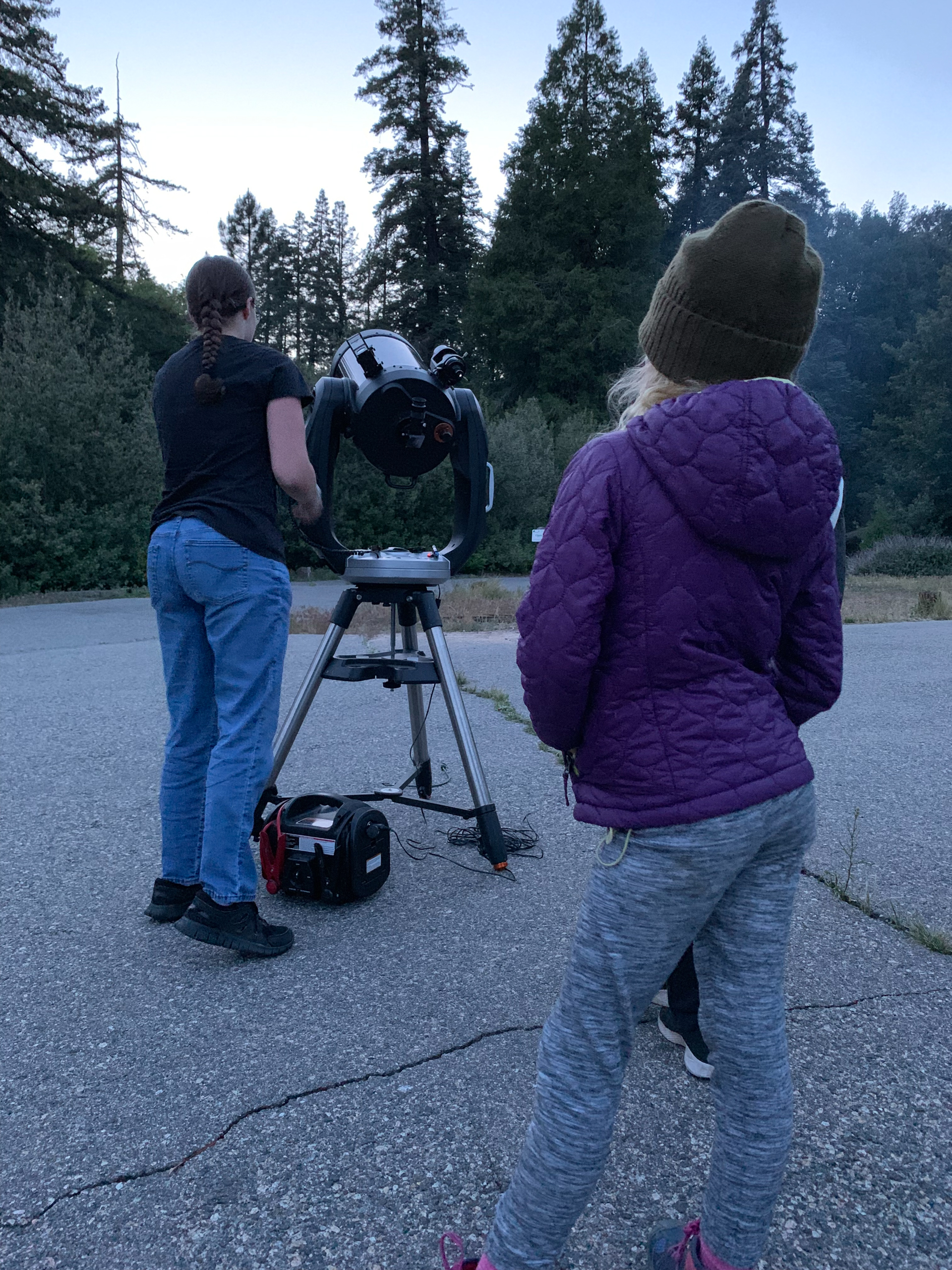
Clothing layers: It can get chilly after the sun goes down, even in the middle of summer. Pack a blanket for warmth.
Folding chair: Even the most enthusiastic sky watchers need to give their legs a break. Be sure to bring along a folding chair, stool, or blanket to sit on.
Bug spray: Unfortunately, the bugs don’t always disappear with the sun. Pack bug spray to keep pesky biters away from you as you enjoy the view.
This article has links to products that were carefully selected by our editors. We may earn commission on your purchases from these links.
